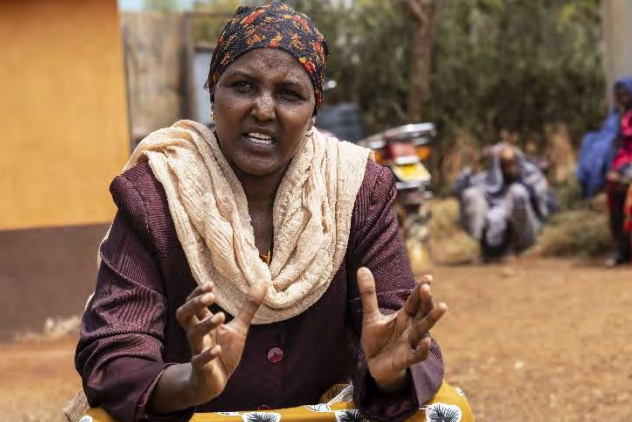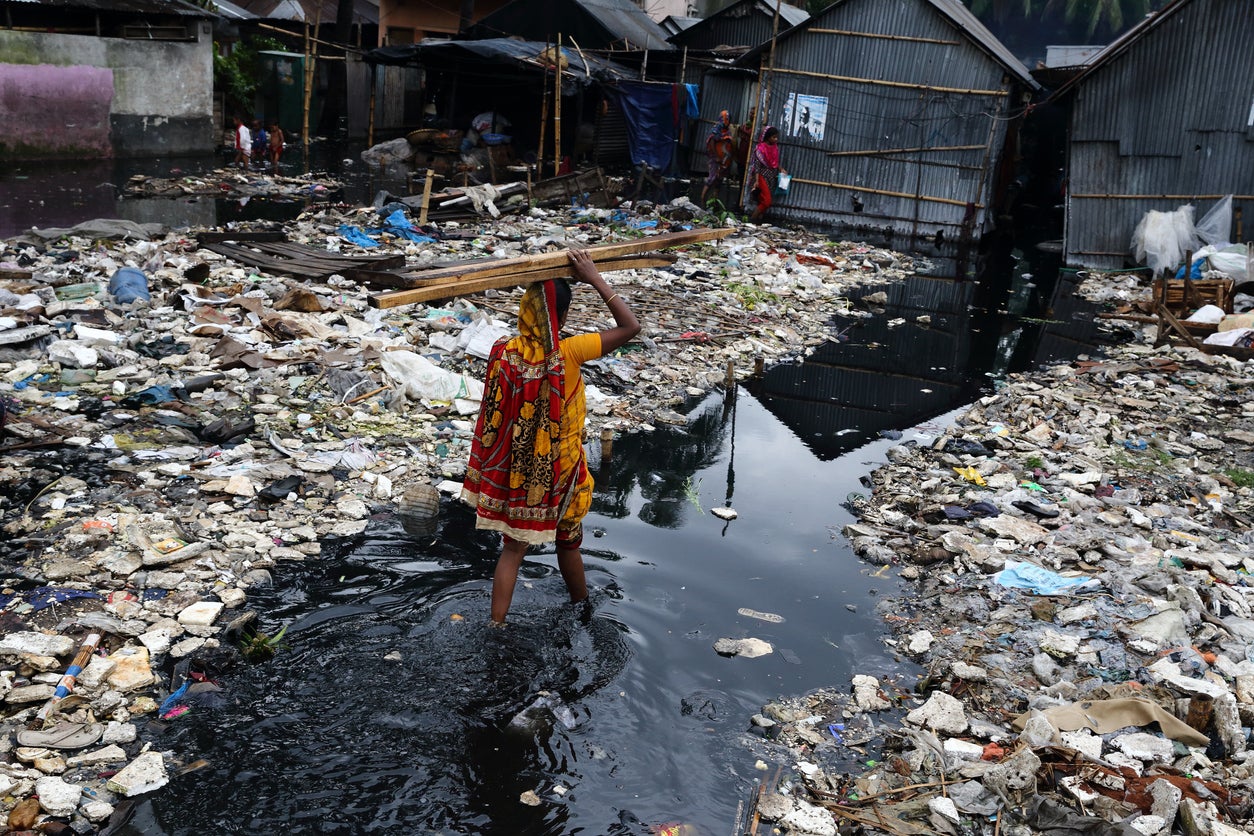International Women’s Day: How the climate crisis is a disproportionate battle
Climate change is a stressor leaving women at heightened risk of domestic violence, sexual intimidation, human trafficking and rape, writes senior climate correspondent Louise Boyle
Your support helps us to tell the story
From reproductive rights to climate change to Big Tech, The Independent is on the ground when the story is developing. Whether it's investigating the financials of Elon Musk's pro-Trump PAC or producing our latest documentary, 'The A Word', which shines a light on the American women fighting for reproductive rights, we know how important it is to parse out the facts from the messaging.
At such a critical moment in US history, we need reporters on the ground. Your donation allows us to keep sending journalists to speak to both sides of the story.
The Independent is trusted by Americans across the entire political spectrum. And unlike many other quality news outlets, we choose not to lock Americans out of our reporting and analysis with paywalls. We believe quality journalism should be available to everyone, paid for by those who can afford it.
Your support makes all the difference.Women and girls are disproportionately impacted by the climate crisis but when power and resources are shifted in their direction, the results can be transformative.
That is the message on International Women’s Day today which is focused on “gender equality today for a sustainable tomorrow”.
Half the planet is already being seriously impacted by climate change, according to the latest chapter of the UN’s authoritative IPCC report, with women and girls particularly vulnerable. Women account for 70 per cent of the 1.3 billion people living in poverty, and are more dependent on at-risk natural resources.
On the international stage, women are still massively under-represented: of the last 26 COP climate summits, just five have been led by women. Only a third of formal positions at COP26 in Glasgow last November were occupied by female government delegates.
As concerning is that women and girls globally make up less than a third of total students enrolled in fields linked to the booming green jobs market.
The rise in extreme weather linked to climate change takes more of a toll on women, particularly in the Global South. In general they tend to be responsible for holding households together in the face of disaster, meaning women are less likely than men to have access to educational opportunities or professional training.
Widespread flooding and droughts create more burdens for women, often leaving them to travel longer distances to access basic needs like food and water, or collect wood for fuel.
And climate-linked food insecurity and air pollution negatively affect maternal and newborn health outcomes, with an increased risk of premature deliveries, stillbirths and low birth weight, Dr Natalia Kanem, head of the United Nations Population Fund (UNFPA) recently wrote in The Independent.
During times of conflict and forced migration, which some studies suggest may worsen with climate impacts, there are excess risks for women and girls.
Cyclones in the Asia-Pacific region have seen an associated rise in gender-based violence, while tropical storms in Latin America left girls vulnerable to sexual exploitation and abuse. Loss of family income makes it more likely that girls are pulled out of school and forced into marriage at a young age.
In Zimbabwe, hundreds of women and girls from the nation’s rural regions are estimated to have joined the sex trade in towns and cities after recent droughts and flash floods destroyed their families’ crops.
One teenage girl, who gave the name Chipo, said that she had no choice but to leave her rural community at the age of 16 to join her sister in Epworth, a commuter town south of the capital Harare.
Despite being on the frontline of understanding the impacts on the climate emergency, the impact of old colonial and economic systems mean women are rarely consulted or decide policy or practical approaches.
“I could not supplement my education because of no money. Later on, I found myself joining sex work. Sometimes we are infected with sexually transmitted infections, but it’s business so we seek treatment,” she told Al Jazeera.
However a growing body of research has revealed that when women lead communities, they are quicker to adapt to climate extremes and have added resiliency.
A new report from Christian Aid recommends that 70 per cent of climate financing be directed into locally-led responses, with a focus on solutions championed by women in marginalised communities. (Yet rich countries, largely in the Global North and responsible for the majority of global greenhouse gas emissions, have so far failed to reach the target of an annual $100bn of green climate finance as promised).
“By examining the lived experience of women across the Global South, we know climate changes are disproportionately impacting women and girls,” Nushrat Chowdhury, climate justice policy advisor and co-author of the report, said.
“Despite being on the frontline of understanding the impacts on the climate emergency, the impact of old colonial and economic systems mean women are rarely consulted or decide policy or practical approaches.”
Kenya
The Christian Aid report highlights the far-reaching changes made possible by female-led projects.
In Marsabit County, Kenya, the tradition of pastoralism - where nomadic communities raise domestic animals in grassland environments - has been battered by land degradation, competition, and scarcity of water and pasture. Combined with political tensions and boundary issues, it has led to a wave of inter-ethnic conflicts.
“Marsabit County was not always like this; yes, it was dry, but not this bad. For women especially, the resources we need have moved further away,” says Sadia Isacko, a local activist.

While women are responsible for feeding and tending to animals, and making products such as sour milk and butter to be sold at markets, they do not traditionally own animals or make decisions about them as they are considered to be men’s wealth.
“Every other responsibility is left for women. They don’t have access to milk, because the herds are away; they have to take care of children; they have to look for food, as their husbands are hundreds of kilometres away herding livestock,” said Ms Isacko.
Kenya’s devolved-style of government created an opportunity. Cultural norms meant that women and young people traditionally have had little say, particularly if they came pastoralist communities, meaning despite their intimate knowledge of the land they were excluded from decisions about it.
A Kenyan organisation, Pastoralist Community Initiative and Development Assistance (PACIDA), has created climate change planning committees involving women and young people, which in turn influence county budget allocations. It also works with women’s groups particularly, to diversify livelihoods, manage rangelands sustainably and share information on climate change.
Bangladesh
Bangladesh is experiencing climate hazards on multiple fronts from life-threatening heat and humidity to sea-level rise and flooding that left one-third of the country underwater in 2020.
Lost livelihoods and displacement because of climate change are increasingly commonplace, and tend to reinforce gender inequalities.
Loss of lands and livelihoods have a strong correlation with child or forced marriage and increased dowry demands. Poverty also contributes to rises in infant and maternal mortality.

Women and girls in minority Indigenous, Dalit and religious groups are additionally vulnerable due to discrimination which restricts their access to land, housing and services, and can increase the risk of violence towards them.
Following disasters, women’s safety and access to secure housing is a critical issue.
“There are high risks of sexual abuse and violence for women, children and disabled during emergencies,” says Jannatul Mouwa, founder of Bindu, a youth feminist organization and CEO of the Best Initiative National Development Unification, which advocates for women’s safe stays in cyclone shelters.
“We are also working for women-friendly cyclone shelters because not all cyclone shelters are suitable for women, children and disabled community members.”
Honduras
Small-scale farmers are bearing the brunt of climate change and environmental degradation in the Central American country.
“It affects housewives the most, because we have to keep an eye on water access. In some cases, maybe the water does not reach the house, so we are forced to bring it from the closest source,” says Yadira Lemus, who produces high-quality coffee. “The same thing happens with family vegetable gardens, because women are the ones… producing what we are going to eat. But this is becoming more and more difficult.”
The Organismo Cristiano de Desarrollo Integral de Honduras has helped dozens of women to set up businesses to produce, market and install sustainable energy technologies in poor communities with limited energy access, Christian Aid reports.
It has proved particularly beneficial for local coffee producers, many of whom belong to the Lenca Indigenous community, providing them with alternative technologies for coffee drying, which is essential to make sure it remains at a high standard.
Solar driers have reduced workloads and by minimising the use of firewood in the drying process and supporting the production of smaller quantities, they also help to reduce deforestation and clearance of land.
This is of massive benefit to the entire community as preserving upland forests reduces the risk of landslides when soils become saturated.
Solar driers have also helped people to cope with climate uncertainty by preventing loss and damage to the final coffee product in the event of unseasonal rains.




Join our commenting forum
Join thought-provoking conversations, follow other Independent readers and see their replies
Comments